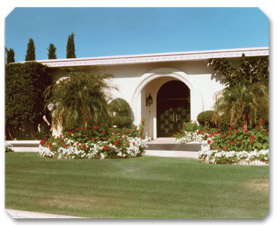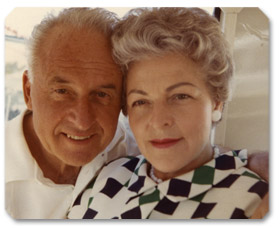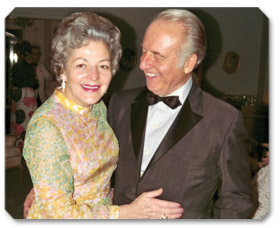|
CHAPTER FOUR The closing year of the tumultuous, electrifying '60s saw the maiden flight of the French-British Concorde, Golda Meir sworn in as Israel's fourth prime minister, U.S. war deaths in Vietnam surpassing those of the Korean War, student antiwar protests reaching their height with nationwide demonstrations against the Nixon-Agnew war policy, and on July 20 the landing of the Apollo spaceship on the moon, 600 million people worldwide watching as Neil Armstrong standing on the lunar surface said, "That's one small step for a man, one giant leap for mankind." Motorola had been NASA's key supplier, providing the communications equipment needed to make that miraculous, historic transmission back to Earth. One month later, in August 1969, the Woodstock Music and Art Festival was held on a dairy farm in upstate New York, where nearly half a million young people gathered during that famous "summer of love." A decade that had included President John F. Kennedy's Camelot vision and subsequent assassination; massive antiwar protests; the rise of civil rights, feminist, and youthful countercultural movements; and the tragic public assassinations of two other iconic American figures, Martin Luther King, Jr., and Robert F. Kennedy, came to an end. Two months before his own assassination, Robert Kennedy spoke out against the murder of Martin Luther King, Jr.: "What we need in the United States is love and wisdom and compassion toward one another and a feeling of justice toward those who still suffer within our own country, whether they be white or black." On November 15, 1969, two hundred and fifty thousand war protestors marched on the Capitol in Washington, D.C. One week later, U.S. astronauts made a second landing on the moon. In this national context of deep political and cultural unrest, on December 30, 1969, Virginia Galvin, fifty-eight, married Kenneth Piper, sixty-two. Ken, like Virginia, was a devout Roman Catholic, and throughout their marriage, he served as a deacon and eucharistic minister at the Casa. Ken and Virginia had also both been midwesterners, childless and widowed, and shared a long history with Motorola, Inc. These commonalities would have been a comfort to Virginia, helping to form a solid base of shared experience on which to build a second marriage and stable partnership. The fact that Ken was a dynamic, ruggedly handsome, and charming man would have been important to Virginia, too. Anyone carrying the burdens she had carried on her own for the past ten years would likely be willingly swept off her feet by the courtliness, dash, and sheer vitality of a man like Ken Piper. Marriages are blended compounds of chemistries and temperaments. Virginia's marriage to Paul had been marked by a spirit of loving mentorship and graceful progression into a poised maturity. Her marriage to Ken was characterized by his gift of a certain natural, irresistible leisure, a gaiety that offered Virginia the opportunity to relax and simply be herself. She had deeply loved Paul and learned from his example; she had worked conscientiously to carry out his unlived dreams; she had embarked upon philanthropic projects of her own, dated other gentlemen, and traveled the world. Now, with Ken, she could come home and find not only simple rest and happiness but a source of tremendous support and strength in her work. In her mid-fifties, Virginia was an astute, confident business woman, a spiritually motivated philanthropist, but she was also,by temperament and particularly in her personal life,deeply romantic in her tastes. To surround herself with an atmosphere of beauty and serenity was crucial to her sensibilities. Whether she was out in public or at home, she was elegant in her dress and gracious and soft-spoken in her manner. She accentuated her beauty by highlighting her already flawless, porcelain skin with her favorite brand of makeup, Estee Lauder. Her favorite perfume was Ecusson, her favorite color blue, her favorite flower the rose. Friends and relatives who knew her best affirm that her tastes in fashion, furnishings, art, music, in civility itself, were traditional, classic, refined, and yet, without contradiction,down-to-earth. She embodied the Greek principles of order, elegance, and simplicity, all symbolized by her own favorite flower, the rose, the same flower Ken Piper sent daily in bouquets to Virginia during his courtship. It is not difficult to imagine how her tastes developed over the years, from the time when she was a young woman forced to conserve because of the Great Depression to the years of her marriage to Paul, who delighted in helping her widen and cultivate her tastes, and finally to her years with Ken, who encouraged Virginia to relax into her own life and give herself permission to revel in happiness. Born in Beardstown, Illinois, on July 24, 1906, Kenneth Piper graduated from the University of California at Los Angeles in 1929 and Loyola University Law School in 1936. He served as an FBI special agent for seven years as one of the original G-men before resigning to join Bausch & Lomb Optical Company, where he worked for five years as director of industrial relations. In 1949, Paul and Bob Galvin hired Ken away from Bausch & Lomb to become vice president of human relations for Motorola, Inc., a position he retained until his retirement in 1973. In 1971, he was appointed special assistant to the chairman of the board. Bob Galvin offers the following description of Ken: He was a very capable leader. Ken Piper was one of the few people in our company I personally hired. I hired him because I was looking for someone who was a sales manager in charge of our personnel department, who could stand strong if there was ever another attack on the company becoming unionized. Ken was a very tough fighter. He was good, strong, and honorable. In 1952, at the age of forty-five, Ken married for the first time. He and Dorothy Isabell had no children, and in 1968, nine years after Virginia had lost Paul to leukemia, Ken lost his wife. A longtime friend of Paul Galvin's, Ken had worked for Motorola, Inc., for twenty years, so he and Virginia had known each other on a casual professional basis for the same amount of time. One recollection of how Ken and Virginia became better acquainted is offered by Christine Ekman, wife of the late commercial and fine artist Stan Ekman: Ken was a very confident, very nice person. You knew he was in the room; he commanded attention. When Virginia ran into Ken at a Motorola meeting, he offered to drive her from Phoenix to another Motorola function they were both attending in Tucson. She accepted, so on that two hour ride down and back, they had a chance to get better acquainted. Stan and I had been friends of Ken and his first wife Dorothy, so one day Ken called us and invited us to dinner, saying, "I'd like you to meet a new friend of mine." Well, of course it was Virginia, and we already knew of her from her time as Paul Galvin's wife. After they were married, the four of us started going out together. We traveled together and had a lot in common. Early in their marriage, the four of us traveled to California and stayed in Laguna Beach. We rented an apartment and went to Disneyland, a place Virginia had always wanted to see. As Mrs. Paul Galvin, everything had always been very formal,she couldn't let loose,so she had such a wonderful time on that trip to Disneyland, doing things she couldn't normally have done as Mrs. Paul Galvin. Nobody knew her there. It was really good for her. She just loved the opportunity to relax. |
|
| About the Author l Pipertrust.org | |










